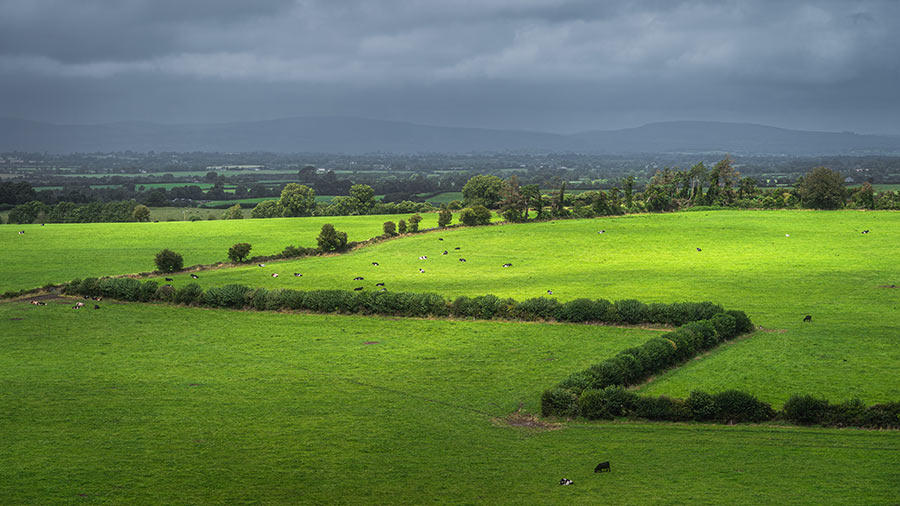2023: Extreme weather and high input costs take toll on farming
 © Dawid/Adobe Stock
© Dawid/Adobe Stock A year ago, farmers taking part in our annual Sentiment Survey predicted that rising input costs would be the greatest challenge they would face in 2023. They were partly right.
The impact of more expensive feed, fertiliser, sprays, labour, rent, to name just some, certainly took its toll on the business of farming over the past 12 months.
See also: Sentiment Survey 2022 report in full
However, there is no accounting for the vagaries of Britain’s climate and, when asked what challenges farmers have actually faced this year, it was weather that topped the list.
It was a year in which records were broken. The driest February in 30 years, followed by the sixth-wettest March ever.
A cool April and May, followed by the hottest June on record. Thereafter, the summer was disappointing, but September saw four consecutive days above 30C, followed by the wettest October this century.
Those two factors – costs and climate – account for the particularly downbeat assessment of the year just gone.
When asked how 2023 had been for their farming business, just 17% said it had been a “good” or “great” year, compared with 55% who gave those answers last year.
Not surprisingly, there was a corresponding surge in the proportion of farmers who described 2023 as “bad” or “terrible”, with 31% giving that answer, compared with just 12% in last year’s survey.
To some extent, this is the inevitable flip side of the fact that 2022 was actually pretty good for many farmers.
Inputs had already been purchased relatively cheaply, and the war in Ukraine then pushed output prices inexorably upwards, generating some decent margins.
The reverse has been true this year, however, with many producers carrying over last year’s high input costs for inputs such as feed, energy and fertilisers, yet suffering a slump in output values, especially for combinable crops and milk.
For example, feed wheat prices at the start of December stood at just £180/t ex farm, compared with £240/t a year ago.
And average milk prices in October were just under 37p/litre, compared with more than 50p/litre at the start of the year.
Best and worst
Looking at the Sentiment Survey findings in more detail, it emerges that oilseed rape growers had a particularly challenging 2023, with 42% saying it was “bad” or “terrible”.
Many early drilled crops suffered from cabbage stem flea beetle damage.
They also tended to ripen early and then shed seeds in July’s storms before giving a disappointing yield. Prices have also been at least £100-£150/t lower all season.
Conversely, sheep producers were more upbeat, with 20% saying they had had a “good” year, reflecting the fact that finished lamb prices have consistently outstripped year-ago levels.
Younger farmers – those in the under-34 years of age category – also seemed more upbeat, a sign, perhaps, of the exuberance of youth…
Investment and training
Despite the financial pressures, it was encouraging to see that the vast majority of farmers have invested in their businesses over the past year, with 68% saying they had done so using their own funds or borrowing, and 16% saying they had made use of some of the government grants available.
As for what they have invested in, it is no surprise to find that machinery tops the list, with 70% of those respondents who have made some investment in 2023 including kit among their purchases.
This comes as little surprise to Agricultural Engineers Association economist Stephen Howarth, who has witnessed steady growth in the number of new tractor registrations.
Figures for the first three quarters of the year showed a 4% increase, with 20% growth in the 160hp-plus category.
“To some extent this reflects a rebalancing of the trade post-Covid,” he said.
“But it also reflects the fact that extended lead times mean that orders that were placed in the second half of 2022, when margins were good, only came through in actual deliveries and registrations in 2023.”
Just 16% said they had not made any investments in their businesses over the past year, although this increased to 25% among farmers in the 65-and-over age bracket.
Training
Farmers have also been active in training, with almost half (48%) saying they or their staff have undertaken some such activity in the past 12 months.
This figure was considerably higher among farm managers (74%), farmers with more than 500ha (81%), and those growing cereals (58%) and oilseeds (66%).
As for the type of activities, the range is impressive, with health and safety at the top of the list (14%), followed by sprayer courses (12%), animal health/husbandry training (9%) and machinery training (5%).
It seems that farm managers, larger farmers and those with forestry among their enterprises were especially keen on forklift training.
We also asked our readership what their training needs might be for the year ahead – and health and safety was again acknowledged as a primary need.
This was welcome to see, given the continued high accident and fatality rate in agriculture.
It was disappointing, however, to see health and safety training ranked more lowly in the over-65 age bracket, as Health and Safety Executive figures reveal time and again that it is older farmers and farmworkers who are most prone to serious on-farm accidents.
There is also a thirst for more training in the area of future government support policy, with many producers in England citing a need for better understanding of the Sustainable Farming Incentive (SFI), grant funding and environmental schemes.
Interest in the SFI was greatest in East Anglia and the South East, and lowest in the South West and North.
This seems to tie in with the observation that there is more opportunity for arable and mixed farmers in SFI than there is for those with livestock and in the uplands.
Government policy and schemes
As post-Brexit farm policy forges ahead in England, and starts to take shape in the devolved regions, we asked our readers what they felt about the direction of travel.
Overwhelmingly, farmers felt “It is too focused on the environment and not on food production”.
In fact, 58% gave this answer, compared with 40% last year, suggesting initial farmer fears that food production is being sidelined have been cemented by the evidence.
There was also a significant drop in the number who said “there is not enough detail to form an opinion”, which has fallen from 26% in 2022, to 16% in the current survey.
Clearly more information is emerging – though 22% of Welsh farmers and 32% of Scottish farmers still feel there is insufficient information.
There is also growing concern about the complexity of the emerging schemes.
Schemes
As for farmers’ inclination to sign up for future support schemes, it seems the jury is still out, with about half saying they have already engaged or plan to do so, and 22% saying there is not enough information to make an informed decision. (Again, this latter figure is far higher in Scotland, Wales and Northern Ireland.)
However, across the whole survey, some 30% said they had no intention of joining a post-Brexit agri-environment scheme, either because they look too complex and restrictive, or because they don’t stack up financially.
Whether that is a concern for government is open to conjecture. Defra says its aim is to get 70% of English farmers involved in Environmental Land Management by 2028. Based on these findings, that is still achievable.
About the survey
- The survey was carried out over three weeks in October and November
- More than 650 farmers and farm managers took part
- Three-quarters of respondents were owner occupiers
- 65% of respondents grew cereals, 44% kept beef, 42% kept sheep, 14% were dairy farmers
- Average farm size was 284ha
Sponsor’s comment
 Lantra is committed to supporting farmers through the agricultural transition by providing high-quality, industry-recognised training, and delivering apprenticeship support to attract new entrants.
Lantra is committed to supporting farmers through the agricultural transition by providing high-quality, industry-recognised training, and delivering apprenticeship support to attract new entrants.
We want to better understand the challenges farmers are facing and their training needs.
Working with Farmers Weekly, we will listen to the voices that matter, and use this insight to support the safe, productive, and sustainable running of your businesses.
By working in partnership, we want to grow skills in the sector and play our part in de-risking businesses, ensuring farming has a sustainable future.
